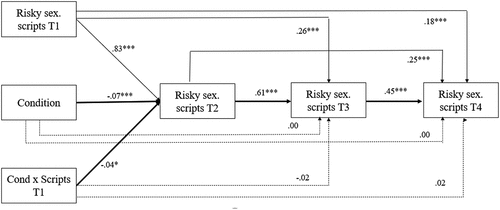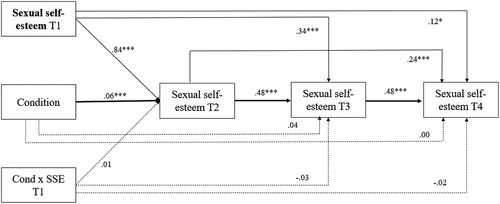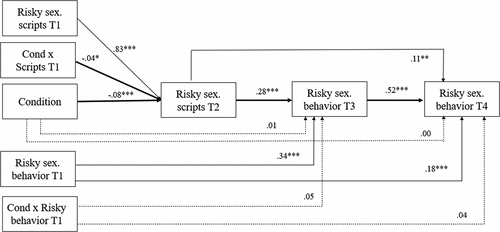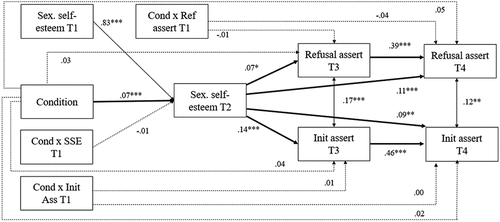Figures & data
Table 1. Means and Standard Deviations of All Model Variables.
Table 2. Bivariate Correlations between the Predictor Variables at T1.
Figure 1. Intervention Effects on Risky Sexual Scripts.

Figure 2. Interactive Effect of Condition x Risky Scripts T1 on Risky Scripts T2.

Table 3. Intervention Effects: Significant Indirect Paths.
Figure 3. Intervention Effects on Sexual Self-Esteem.

Figure 4. Intervention Effects on Initiation Assertiveness.

Figure 5. Indirect Intervention Effects on Risky Sexual Behavior via Risky Sexual Scripts.

Figure 6. Indirect Intervention Effects on Sexual Assertiveness via Sexual Self-Esteem.

